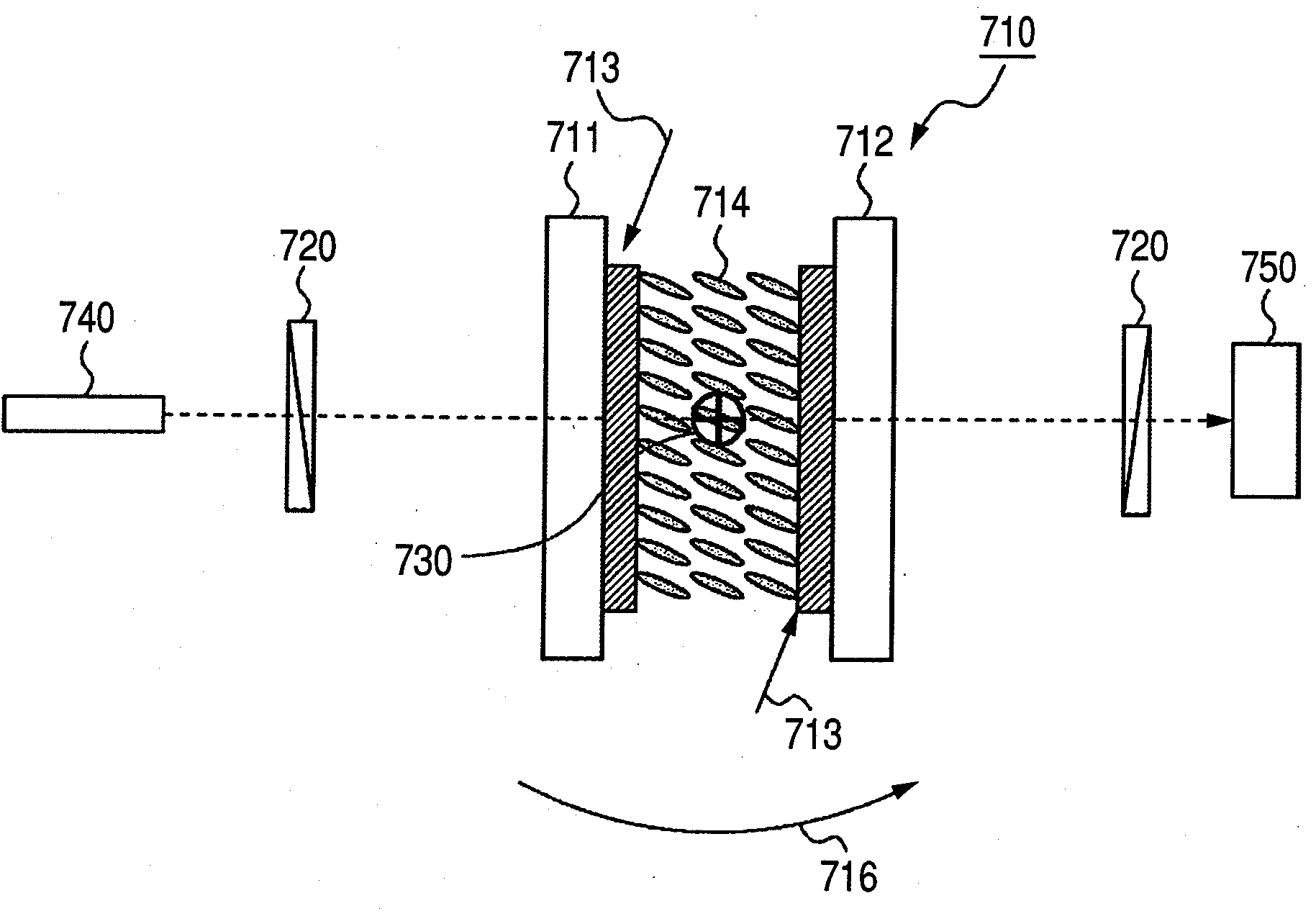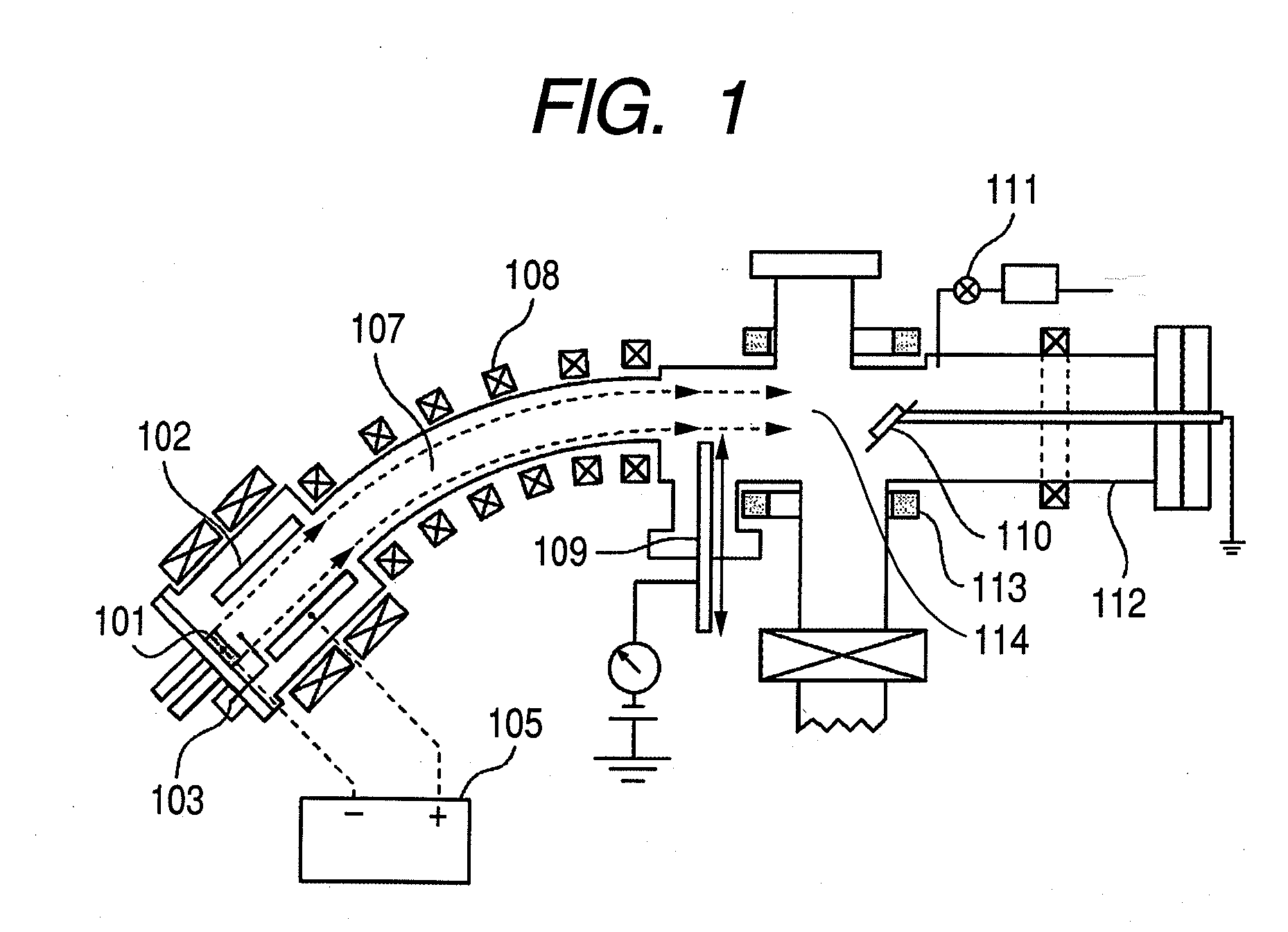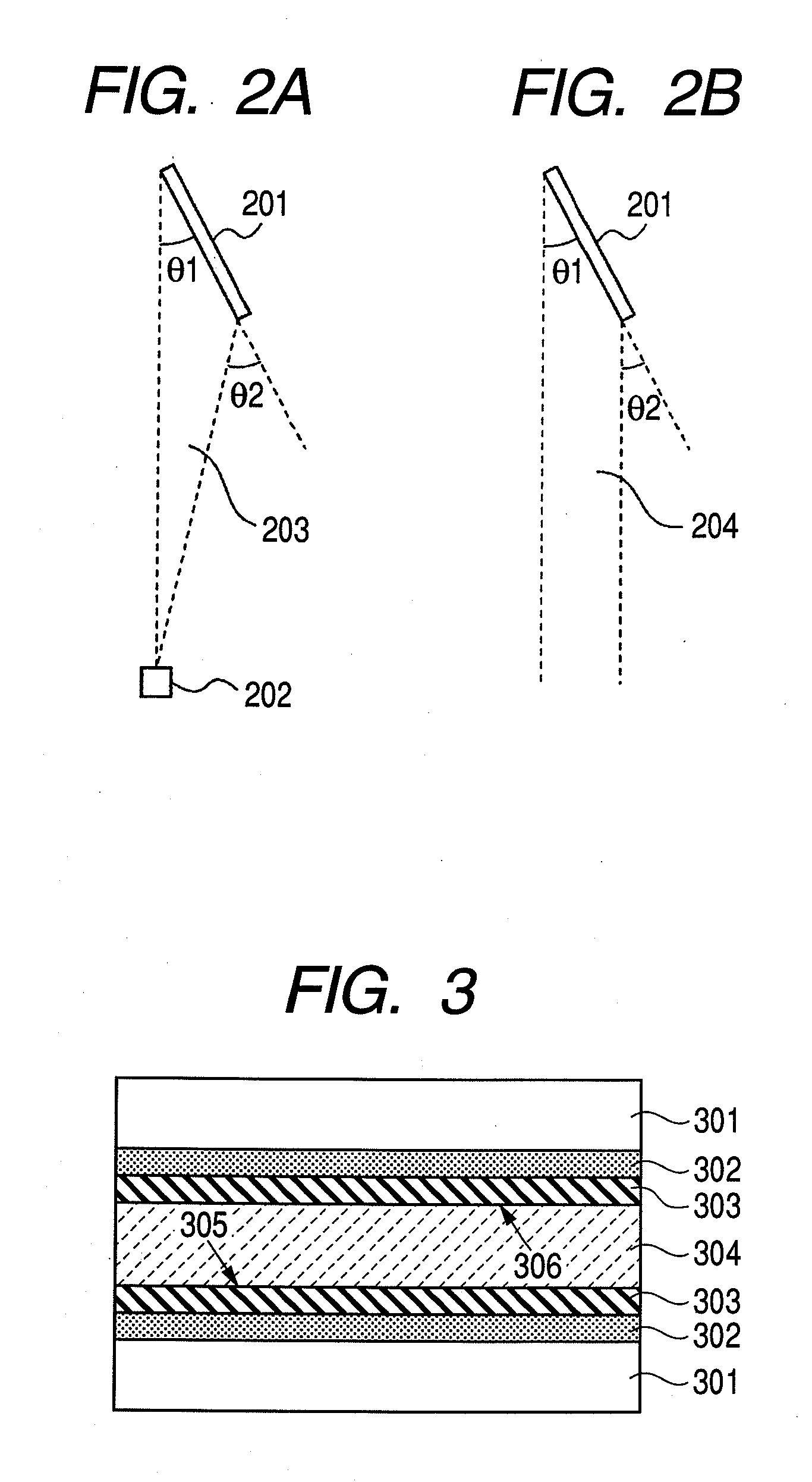Liquid crystal optical device manufacturing process
a manufacturing process and liquid crystal technology, applied in non-linear optics, instruments, optics, etc., can solve the problems of low durability, low production efficiency, and high cost, and achieve high deposition rate, excellent durability, and uniform manufacturing over a large area
- Summary
- Abstract
- Description
- Claims
- Application Information
AI Technical Summary
Benefits of technology
Problems solved by technology
Method used
Image
Examples
example 1
[0100]An inorganic alignment film was formed on glass substrates by means of the vacuum arc plasma film forming system shown in FIG. 1.
[0101]An alloy of 92% of silicon and 8% of aluminum was used as a material for the cathode 101. Oxygen gas was fed into the film forming chamber 114 to form an inorganic alignment film composed of Al2O3 and SiO2.
[0102]The substrate used was an alkali-free glass substrate of 0.7 mm in thickness. On the surface of the substrate, an ITO film was formed in a thickness of 20 nm. This substrate was cut in a size of 20 mm square to prepare film-formed glass substrates 510.
[0103]The arrangement of the glass substrates 510 at the time the alignment film was formed is shown in FIGS. 5A and 5B. Nine sheets of the film-formed glass substrates 510 were arranged as shown therein and were held in a substrate holder 503. This holder with substrates was set in the vacuum arc plasma film forming system shown in FIG. 1, in such a way that the direction of the substrate...
example 2
[0113]In this Example, the inorganic alignment film was formed on glass substrates, using a cathode material different from that in Example 1. The same vacuum arc plasma film forming system as in Example 1 was used.
[0114]In this Example, high-purity silicon was used as the material for the cathode 101. However, since the high-purity silicon has too high resistivity to easily generate arc discharge, silicon doped with 500 ppm of boron was used as the cathode material.
[0115]In the same way as in Example 1, oxygen was fed into the film forming chamber 114 through the gas feed valve 111 so as to form an inorganic alignment film composed of silicon oxide. The flow rate of this oxygen was appropriately controlled to make an experiment.
[0116]The discharge voltage for vacuum arc discharge was set at 30 V, and the arc current at 70 A. Substrates, the arrangement of the substrates at the time of film formation, degree of vacuum, and conditions for beam scanning by the aid of a magnetic field ...
PUM
| Property | Measurement | Unit |
|---|---|---|
| pretilt angle | aaaaa | aaaaa |
| temperature | aaaaa | aaaaa |
| voltage | aaaaa | aaaaa |
Abstract
Description
Claims
Application Information
 Login to View More
Login to View More - R&D
- Intellectual Property
- Life Sciences
- Materials
- Tech Scout
- Unparalleled Data Quality
- Higher Quality Content
- 60% Fewer Hallucinations
Browse by: Latest US Patents, China's latest patents, Technical Efficacy Thesaurus, Application Domain, Technology Topic, Popular Technical Reports.
© 2025 PatSnap. All rights reserved.Legal|Privacy policy|Modern Slavery Act Transparency Statement|Sitemap|About US| Contact US: help@patsnap.com



